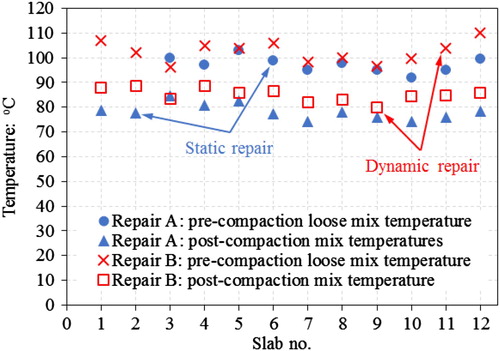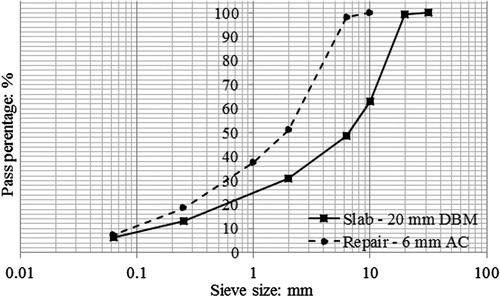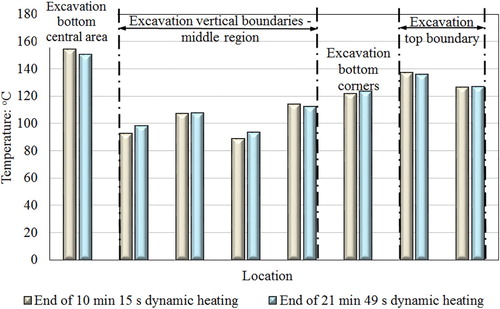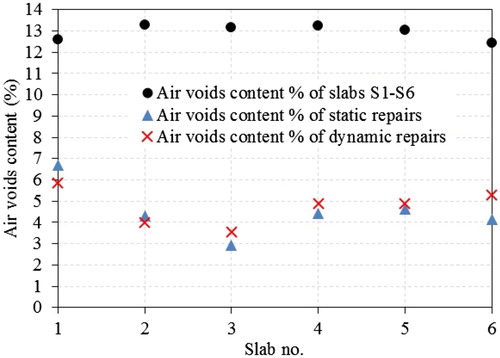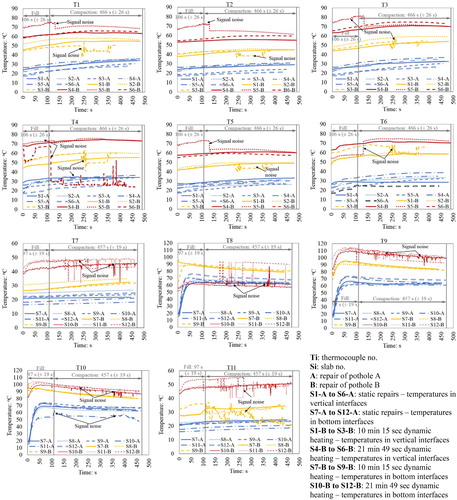Figures & data
Table 1. Experimental program.
Figure 2. Slab with pothole repairs: (a) moulds; (b) constructed slab; (c) demoulded slab and pothole excavations; (d) constructed pothole repairs: A is a static repair and B is a dynamic repair.
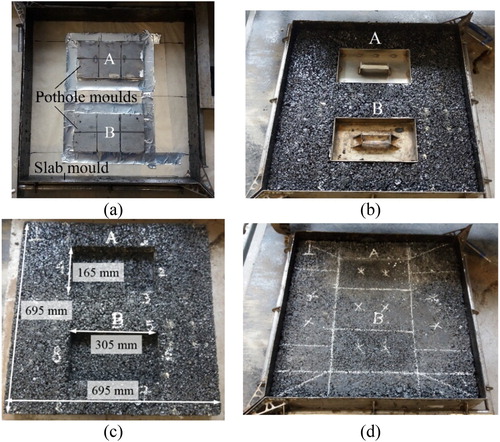
Figure 3. Thermocouples in static and dynamic repairs completed for pothole A and B respectively: (a) slab and coordinate system for Table ; (b) thermocouples T1–T6 for measurement of temperatures in the vertical interfaces of the pothole repairs; (c) thermocouples T7–T11 for measurement of temperatures in the bottom of the pothole repairs; and (d) thermocouple routes from pothole excavations to data loggers.
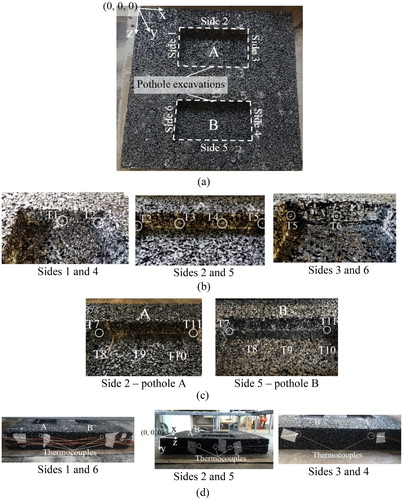
Table 2. Post-compaction thermocouple locations in the pothole excavation of static repairs in accordance with the origin of the coordinate system shown in Figure (a,d).
Figure 4. Pre- and post-compaction temperatures of pothole fill mixtures for static repair (Repair A) and dynamic repair (Repair B).
